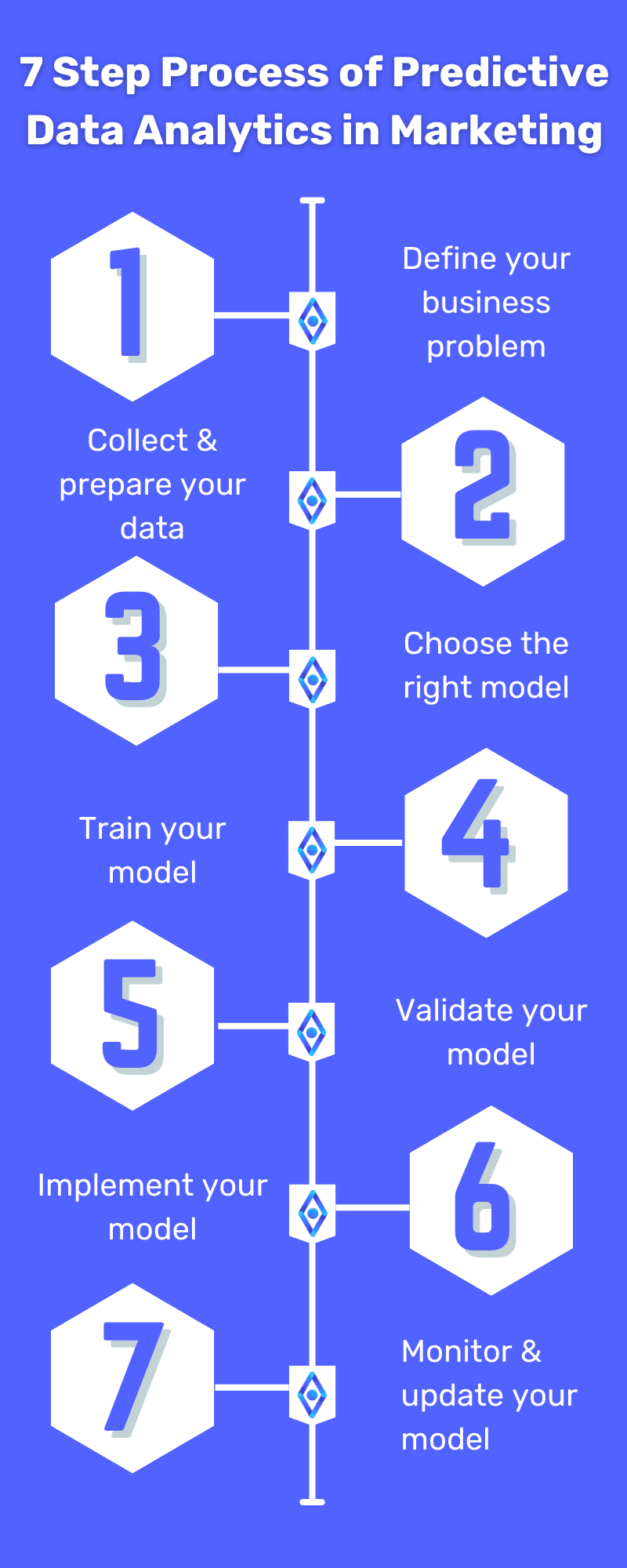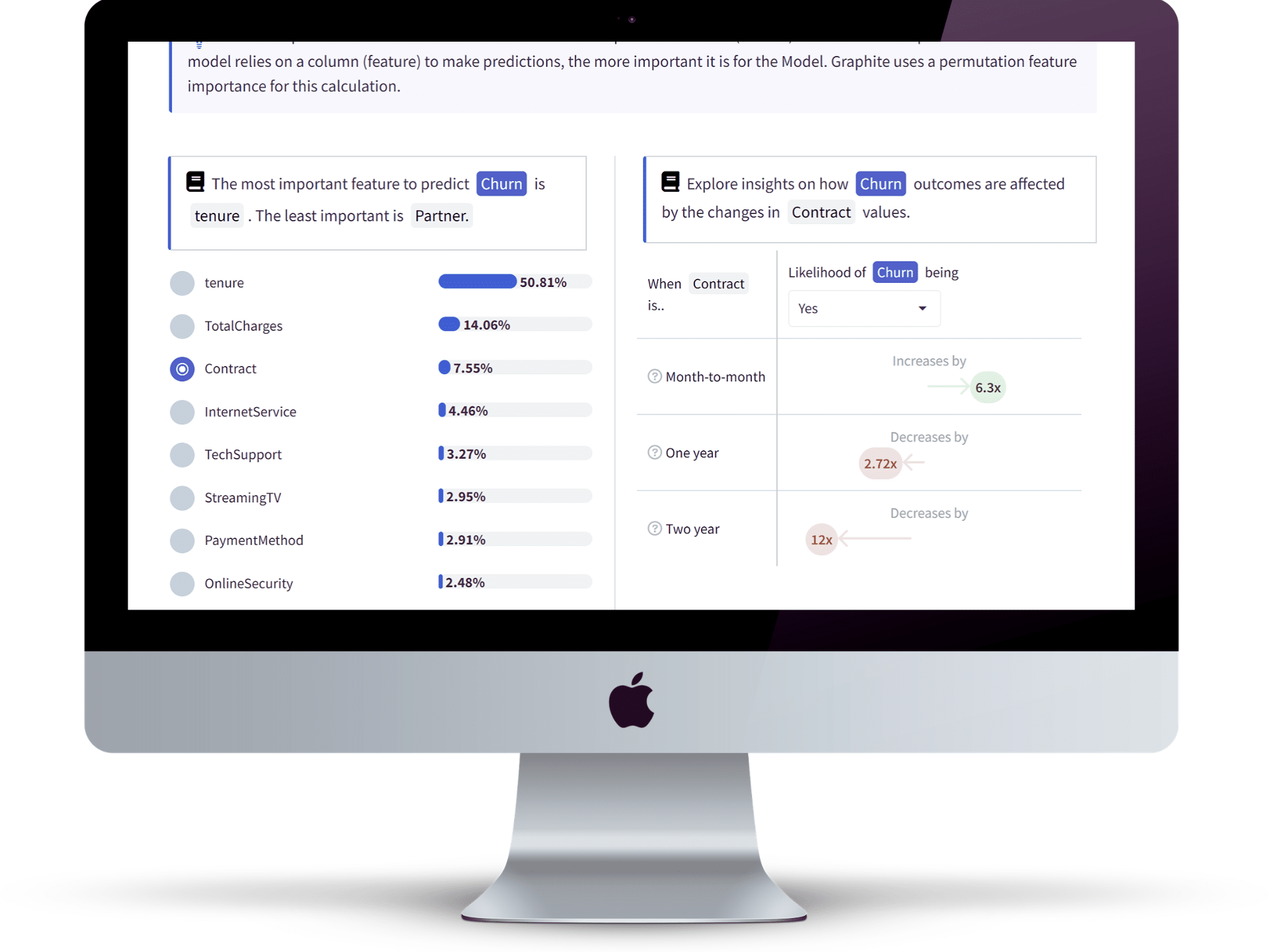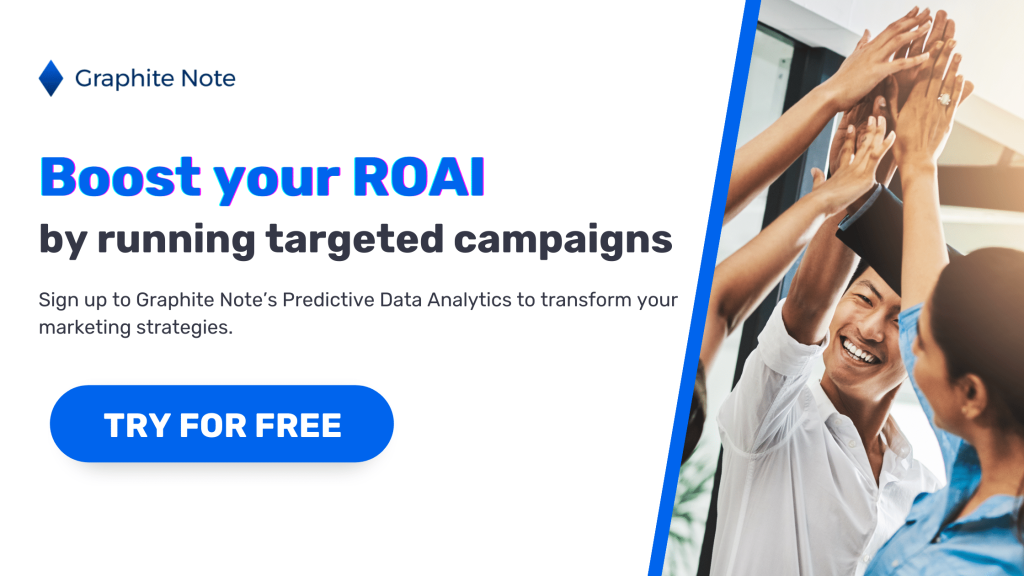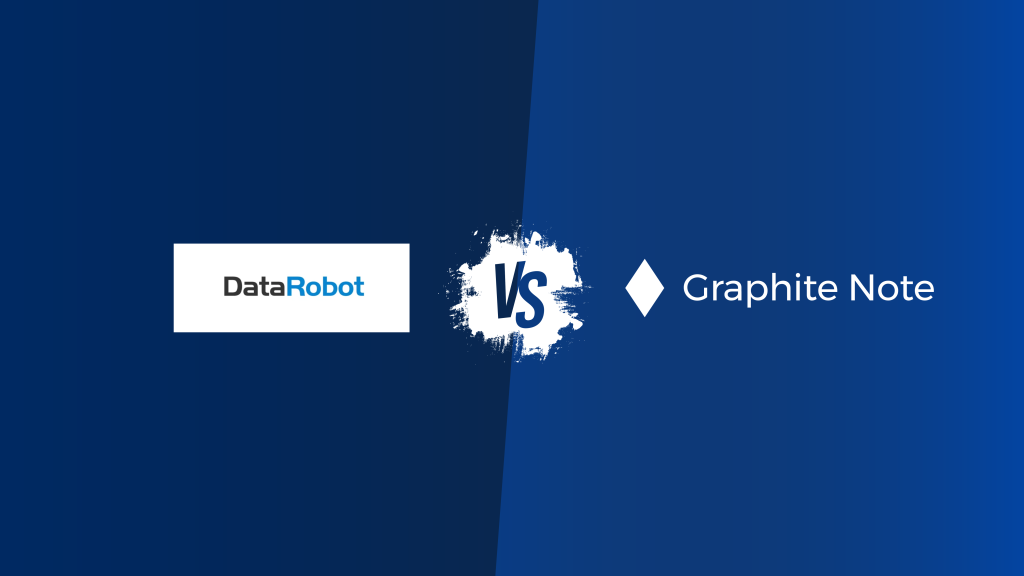Introduction
Using predictive data analytics in marketing can help you grow your business. Understanding your marketing data analytics helps you improve your marketing strategies.
Predictive data analytics in marketing
As businesses become increasingly data-driven, predictive data analytics has become essential. These help to drive business growth and make informed decisions. No-code machine learning tools empower marketing teams to leverage predictive analytics. No-code machine learning tools work well as marketing analytics tools. No-code machine learning can give you actionable insights to improve your marketing strategy. In turn, this helps your marketing team reach, or exceed, their targets. Predictive data analytics in marketing has become essential. Traditional marketing analytics software can be expensive. Yet, you must understand your marketing data analytics. Instead of using traditional marketing analytics software, consider no-code machine learning.
Predictive marketing analytics process
This article explores a 7 step predictive marketing analytics process. This is a proven method for leveraging no-code predictive data analytics in marketing. No-code predictive analytics can help you to solve specific business problems. We’ll provide real-world examples and best practices to guide you. We take you through defining your business problem to updating your predictive models. With no-code machine learning tools, you can simplify building predictive models. This makes it more accessible to data analysts and business intelligence teams. Here’s how to use no-code machine learning tools as your marketing analytics tools.
Step 1: Define your business problem
You must define the business problem you aim to solve, using marketing predictive analytics. Identify your goals and what you want to achieve with your data. This should link to your greater business objectives.
Before diving into the data, you must define the problem you want to solve. Start by taking a look at what’s happened before. By looking at historical data, you can uncover hidden marketing insights. For example, you want to predict which leads will most likely convert to paying customers. You would start by examining past leads’ behavior and attributes. From there, you can identify patterns and trends.
These examples show how businesses can leverage predictive analytics to solve business problems. Predictive analytics also helps you improve decision-making, and drive growth. Predictive analytics helps your business answer questions like:
- “Which leads are most likely to convert to paying customers?”
- “How can we prioritize and allocate our sales resources?”
- “What are the key attributes and behaviors of our highest converting leads?”
- “How can we optimize our lead generation and nurturing strategies?”
- “How can we use predictive lead scoring to identify cross-sell and upsell opportunities?”
- “What factors are driving customer churn in our subscription-based business model?”
- “Which products are most likely to be bought together?”
- “How can we optimize our product bundles to increase revenue?”
- “How can we reduce our inventory carrying costs without affecting our ability to fulfill customer orders?”
- “What is the lifetime value of our customers?”
- “How can we increase our customer lifetime value?”
- “What factors contribute to higher customer satisfaction and loyalty?”
- “How can we improve our customer satisfaction and customer loyalty?
- “How can we identify fraudulent transactions in real time and prevent them?”
- “Which marketing channels are most effective at driving conversions?
- “How can we optimize our marketing spend?”
By defining the problem and business question, you can focus your efforts. Your efforts should focus on:
- Collecting and analyzing the right data
- Selecting the appropriate machine learning models
- Making data-driven decisions that deliver measurable results.
Tip: Align your predictive analytics approach with your larger business objectives. This helps you gain insight into the data available to you.
You can better understand your customer by analyzing historical data. Using predictive modeling techniques, you can analyze their behaviors, preferences, and needs. You can use this to create targeted marketing and sales campaigns, and drive business growth.
Step 2: Collect and prepare your data
Once you’ve defined your problem, you can focus on collecting the right data to solve it. You’ll need accurate, relevant data to train your predictive model. The right data enables you to gain valuable insights into your business operations.
Don’t forget to think outside the box. Don’t limit yourself to the obvious data sources. Consider what other data might provide useful insights into your problem. Data from your digital marketing tactics can be useful for this use case. Reports about your digital marketing campaigns can be a useful source of information. Data from your social media marketing efforts can be useful too.
Collect and prepare the data you need to solve your business problem. Ensure that your data is accurate and relevant to your problem. Your marketing metrics include various types of data. Figure out which marketing metrics you want to include in your data set. The data available to you is far larger than you may realize.
Predicting customer churn
If you’re trying to predict customer churn in your subscription-based business model, you’ll need to collect data like:
- Historical data on customer behavior (e.g. purchase history, support interactions, website activity, Google Analytics)
- Marketing data (e.g. digital marketing tactics, digital marketing campaigns and results, lead generation results)
- Customer data, including demographic data (e.g. age, location, gender)
- Firmographic data (e.g. company size, industry, revenue)
- Customer experience data (e.g. feedback from surveys, reviews, and customer service interactions)
By analyzing this data, you can identify patterns and trends that may be indicative of future churn risk. You might find that customers who have been with your company for a short time, or who have had more support interactions, are more likely to churn.
Predicting revenue forecast
If you’re trying to predict revenue forecasts for your eCommerce business, you’ll need to collect data such as:
- Historical sales data (e.g., revenue, average order value, conversion rates)
By analyzing this data, you can identify trends in sales and revenue. These can highlight future growth opportunities or challenges. You might find that certain product categories or marketing channels are more effective.
Predicting Lead Conversion
You can use no-code data analytics tools to predict lead conversion. You’ll need to collect data such as:
- Historical sales data (e.g., revenue, average order value, conversion rates)
- Lead behavior data (e.g., website activity, bounce rate, email engagement, social media posts, social media interactions, social media marketing campaigns, Google Analytics)
- Firmographic data (e.g., company size, industry, revenue)
- Demographic data (e.g., job title, location, company type)
- Digital marketing data and traditional marketing data (e.g., ad spend, click-through rates, open email rates, digital marketing channels, digital marketing budget, marketing performance reports)
By analyzing this data, you can identify patterns and trends that may show a lead’s likelihood to convert. Understanding this can help you build enhanced personalized experiences for your target audience.
Using a predictive lead scoring model, you can automate the process of identifying high-quality leads. This helps you prioritize leads for follow-up. In turn, it optimizes your sales and marketing efforts. Better decisions lead to better results for your business.
This insight can also help you create targeted marketing and sales campaigns. These will drive business growth and optimize customer acquisition. You can create more personalized experiences for your customers using data analytics tools.
With a no-code machine learning tool, you can build and train a predictive model without needing ML expertise. This saves your business time and resources while delivering valuable insights. Your sales and marketing teams can then optimize their strategies. Data analytics tools play a key role in understanding your customers.
Collecting the right data is a critical step in the predictive marketing analytics process. To answer your business problem, you must collect relevant data. Relevant data provides insights into customer behavior, firmographics, demographics, and digital marketing channels. You can uncover hidden insights by analyzing this data using machine learning models.
Take the time to think about the data you need to collect. Ensure that it is accurate, relevant, and useful for solving your business problem. Your data management approach plays a role in how you train your machine learning model.
Step 3: Choose the right predictive model
Once you have collected and prepared the data, it’s time to choose the right predictive model to solve your business problem. You’ll need to select a machine learning algorithm that fits your data and is appropriate for the type of problem you’re trying to solve.
Many types of machine learning algorithms exist. These include linear regression, decision trees, random forests, and neural networks. Each algorithm has its strengths and weaknesses, and the best one will depend on the nature of your data and the problem you’re trying to solve.
To choose a suitable predictive model, you’ll need to experiment with different algorithms. You will also need to experiment with different parameters and measure their performance. You can use metrics such as accuracy, precision, recall, and F1 score. These metrics assess your model’s performance and fine-tune it for optimal results. These advanced analytics can help you to improve your marketing campaigns.
Step 4: Train your model
Once you have chosen the suitable predictive model, it’s time to train it using your data. In this step, you’ll use the data you collected in Step 2 to teach the machine learning algorithm to recognize patterns and make predictions.
To train your model, you’ll need to split your data into two parts: a training set and a testing set. The training set is used to teach the machine learning algorithm, while the testing set is used to evaluate the performance of the model.
It’s vital to ensure that your model is not overfitting to the training data, as this can lead to poor performance on new data. To avoid overfitting, you can use cross-validation, regularization, and early stopping techniques.
Step 5: Validate your model
After training your model, it’s important to validate it to ensure that it is accurate and reliable. In this step, you’ll test your model on new data to see how well it performs in the real world.
To validate your model, you can use various techniques. These include k-fold cross-validation, holdout validation, and leave-one-out validation. By testing your model on new data, you can ensure that it is generalizing well and that it is not overfitting to the training data.
It’s essential to ensure that your model provides valuable insights relevant to your business problem. You can use various techniques to understand how your model makes predictions. You also want to learn which features are most important. These techniques include feature importance and Shapley values.
Step 6: Implement your model
After validating your model, it’s time to implement it into your business processes. You’ll use the insights from your predictive data analytics to make data-driven decisions. This will help you to improve your business outcomes.
To implement your model, you can integrate it into your CRM, marketing automation, or other business software. You can use the predictions generated by your model to prioritize leads. You can also use these predictions to personalize marketing messages and optimize pricing.
It’s important to ensure that your predictive model is being used to drive tangible business outcomes. You can use metrics such as customer lifetime value, revenue growth, and customer satisfaction. These metrics help you to evaluate the effect of your model on your business. Advanced analytics can give you excellent insights into how to optimize your marketing strategy. This helps your marketing team make better decisions through predictive modeling.
Step 7: Monitor and update your model
Once you have implemented your predictive model, monitoring its performance is essential. You’ll track the model’s performance over time and ensure that it remains accurate and relevant to your business problem. To monitor your model, you can use performance metrics such as accuracy, precision, recall, and F1 score. You can also conduct error analysis and collect feedback from stakeholders to identify areas where the model can be improved.
By monitoring your model’s performance, you can identify when it is no longer providing accurate predictions. You can also assess when it is no longer relevant to your business problem. You can then update the model by retraining it on new data or fine-tuning its parameters.
Ensure that your predictive model keeps up with changes in your business and the external environment. For example, if you’re in the retail industry, you’ll need to update your model to reflect changes in consumer behavior and market trends. You can ensure that it remains a valuable tool by continuously monitoring and updating your predictive model.
Conclusion
No-code predictive data analytics in marketing are essential for your business. By leveraging the power of machine learning and AI, you can gain valuable insights into your operations. You can optimize your processes, and drive growth and profitability.
Live Demo
If you are interested in seeing live demo of predictive analytics in action, here are the links:
Sales Forecasting: Explore Here
Predictive maintenance: Explore Here
Predictive Lead Scoring: Explore Here
Predictive Customer Churn: Explore Here







